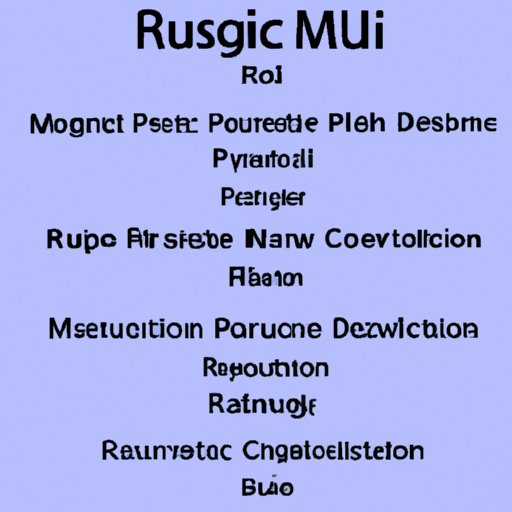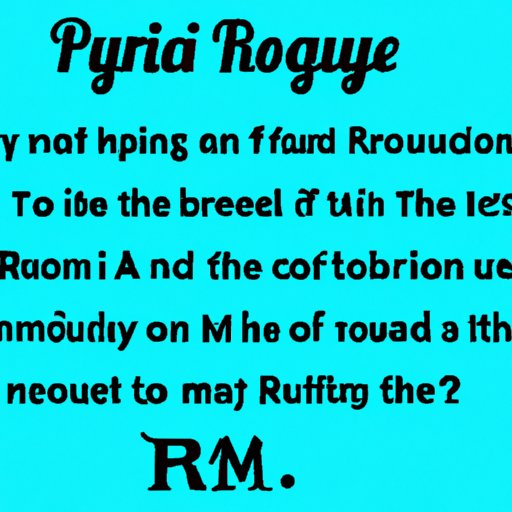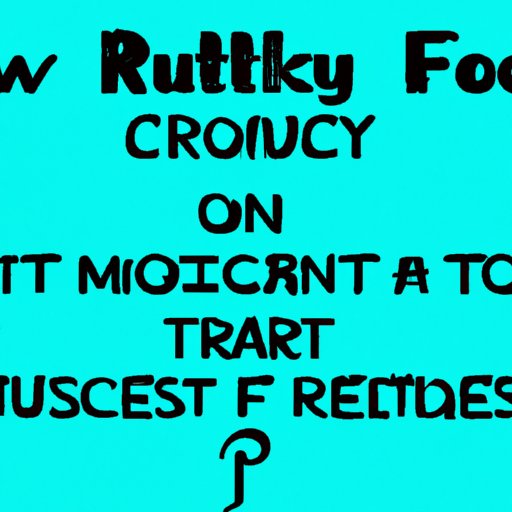Introduction
Royalty free music is an attractive option for many creatives, including filmmakers, videographers, game developers, and other content creators. But what does royalty free music mean? In this article, we explore the definition of royalty free music, the purpose of the article, and the benefits and rights associated with royalty free music licensing.

Overview of Royalty Free Music Licensing
What is Royalty Free Music?
Royalty free music is a type of license that allows for music to be used in a variety of ways without having to pay recurring royalties. The purchaser pays one fee for the license, which grants them certain rights to use the music for their project. These rights vary depending on the specific license purchased.
Types of Royalty Free Music Licenses
There are several different types of royalty free music licenses. The most common are: Standard License, Extended License, and Mass Reproduction License. The Standard License allows for a single user to use the music on one project, while the Extended License permits multiple users to use the same music on multiple projects. The Mass Reproduction License is designed for larger projects that require unlimited usage of the music.
Benefits of Royalty Free Music
Royalty free music offers a number of advantages over traditional music licensing. It’s cost-effective, as you pay one fee for the license rather than ongoing royalties. It’s also convenient, as you can find and purchase the perfect track for your project quickly and easily. Finally, it’s flexible, as you can choose from a wide range of genres and moods to match your project’s needs.

Common Misconceptions about Royalty Free Music
“Royalty Free” Does Not Mean “Free of Cost”
One of the most common misconceptions about royalty free music is that it is free of cost. This is not true. Although you do not have to pay ongoing royalties, you must still purchase a license in order to use the music. Depending on the type of license, the cost can vary significantly.
Royalty Free Music is Not Necessarily Copyright-Free
Another misconception is that all royalty free music is copyright-free. This is also not true. While some royalty free music may be copyright-free, this is not always the case. Be sure to read the terms of the license carefully before purchasing to ensure that you are not infringing on any copyrights.
Royalty Free Music Can Still Require Credits or Attribution
Finally, some people mistakenly believe that they do not need to credit the artist when using royalty free music. However, this is not always the case. Many royalty free music licenses require that you credit the artist in your project. Be sure to check the terms of the license before using the music to make sure you are properly crediting the artist.
What Rights Does a Purchaser Receive with Royalty Free Music?
Reproduction Rights
The most basic right granted by a royalty free music license is the right to reproduce the music. This means that you can use the music in your project without fear of infringing on any copyrights. You can also make copies of the track for use in multiple projects or to share with others.
Distribution Rights
Another right granted by a royalty free music license is the right to distribute the music. This means that you can share the music with others, either through physical media or digital downloads. You can also sell and promote the music, as long as you abide by the terms of the license.
Performance Rights
Finally, some royalty free music licenses also grant the right to perform the music publicly. This means that you can use the music in live performances, such as theater productions or concerts. Again, be sure to check the terms of the license before performing the music publicly.
How to Find Quality Royalty Free Music for Your Project
Research Available Libraries
The first step in finding quality royalty free music is researching the available libraries. There are a number of online services that offer royalty free music, such as Soundstripe, Artlist, and Epidemic Sound. Take some time to explore the different libraries and compare the options.
Consider the Genre and Mood of the Music
Once you’ve found a few libraries that you like, start considering the genre and mood of the music. Do you want something upbeat and energetic? Or are you looking for something more somber and reflective? Once you’ve narrowed down your search, you’ll be able to find the perfect track for your project.
Read Reviews and Evaluate Samples
Finally, take some time to read reviews and evaluate samples before purchasing a license. Look for reviews from other customers who have used the same library. Also, take advantage of any free samples the library offers to get a better idea of the quality of the music.
Conclusion
Royalty free music is an attractive option for many creatives. It’s cost-effective, convenient, and flexible. However, there are a few misconceptions about royalty free music that should be clarified. For example, “royalty free” does not mean “free of cost” and royalty free music can still require credits or attribution. Additionally, purchasers of royalty free music receive certain rights, such as reproduction rights, distribution rights, and performance rights. Lastly, when searching for quality royalty free music, research available libraries, consider the genre and mood of the music, and read reviews and evaluate samples.
(Note: Is this article not meeting your expectations? Do you have knowledge or insights to share? Unlock new opportunities and expand your reach by joining our authors team. Click Registration to join us and share your expertise with our readers.)
